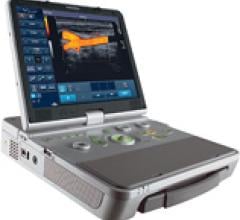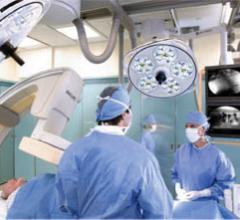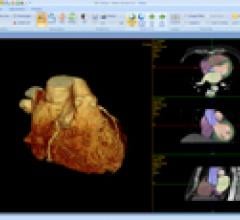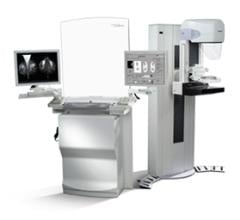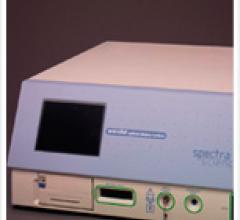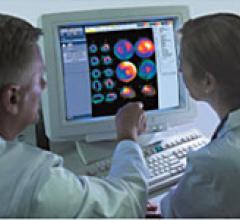Cancer mortality rates have decreased as new technologies have been introduced into the field of healthcare, but these new technologies can sometimes present new challenges. There is no better example than in the fight against breast cancer.
February 4, 2010 – The FDA granted market clearance today for Toshiba America Medical Systems Inc.’s Viamo laptop ultrasound system. The device offers the same capabilities as larger cart-based systems that were previously unavailable on hand-carried systems. The Viamo was introduced at the 2009 Radiological Society of North America (RSNA) annual meeting.
For more than a decade, Barry T. Katzen, M.D., medical director of Baptist Cardiac and Vascular Institute (BCVI) in Miami, Fla., has pioneered the integration of surgical and interventional procedures. Dr. Katzen and his team continue to show that surgical procedures in an angiographic environment can be accomplished with the same degree of efficiency as in an operating room (OR).
SPONSORED CONTENT — Fujifilm’s latest CT technology brings exceptional image quality to a compact and user- and patient ...
In the past five years, no sector of healthcare has had as big a target on its back as advanced diagnostic imaging services has. Representatives of commercial insurance companies, politicians and even the media all have gravitated to using an MRI or CT service as the prime example of healthcare system waste.
In the past five years, no sector of healthcare has had as big a target on its back as has advanced diagnostic imaging services. Representatives of commercial insurance companies, politicians and even the media all have gravitated to using an MRI or CT service as the prime example of healthcare system waste.

SPONSORED CONTENT — Fujifilm’s latest CT technology brings exceptional image quality to a compact and user- and patient ...
The importance of dealing with the epidemic of coronary artery disease (CAD) is well known, and the tools at our disposal to accurately recognize and manage it are evolving in very positive ways.
SPONSORED CONTENT — EnsightTM 2.0 is the newest version of Enlitic’s data standardization software framework. Ensight is ...
Data storage for any application is an assumed liability for all users. Whether capacity is expected on a laptop, cellular phone or clinical application, users of specific applications rely on the presence of storage capacity and information access with the same level of expectation that there will be air to breathe.
In a short time, the field of radiation oncology has experienced an explosion in imaging data. With large volumes of images generated across the course of treatment — from diagnosis to treatment planning, real-time treatment and follow-up — clinicians are grappling with what many refer to as a data tsunami.
When David Blumenthal, M.D., National Coordinator for Health Information Technology wrote in the New England Journal of Medicine1, “Information is the lifeblood of modern medicine. Health information technology (HIT) is destined to be its circulatory system,” he clearly drew a connection between digital medical data and the delivery of care.
Did you know that approximately one-third of all the data in world is created by the healthcare industry and that ...
February 4, 2010 - To improve the safety and quality of cancer treatment, and reduce the chances of medical errors, the American Society for Radiation Oncology has committed to a six-point patient protection plan, reported ASTRO Board Chairman Tim R. Williams, M.D.
February 4, 2010 - “Information is the lifeblood of modern medicine. Health information technology is destined to be its circulatory system.”1
February 3, 2010 - The demanding nature of maternal-fetal medicine requires medical imaging and workflow solutions to help streamline the busy environment. Dedicated women’s imaging systems and applications in OB/GYN imaging presented at the Society for Maternal-Fetal Medicine’s (SMFM) 30th Annual Meeting held Feb.1-6, in Chicago, will focus on new advances in the delivery of care.
Having the most efficient clinical workflows with enhanced diagnostic capabilities is a major goal for clinicians and ...
February 3, 2010 – The FDA granted 510(k) market clearance for Shina Systems’ 3Di advanced medical (3D/4D) visualization software that downloads over the Internet and provides a full suite of image processing and clinical analysis applications on any PC.
February 2, 2010 - Key to any purchase of capital equipment is maintenance and in a busy hospital setting that may require protecting X-ray panels from scratches and smudges.
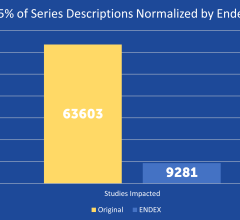
SPONSORED CONTENT — EnsightTM 2.0 is the newest version of Enlitic’s data standardization software framework. Ensight is ...
February 2, 2010 - Hologic reported its first quarter 2010 net income was $26.1 million, or 10 cents per diluted share, calculated in accordance with U.S. generally accepted accounting principles (GAAP).
February 2, 2010– Doctors can now use light to optically scan tissue and provide immediate analysis of cancerous tissue.
February 2, 2010 - Among noninvasive imaging tests for ruling out coronary artery disease (CAD), computed tomography (CT) is a more accurate noninvasive test than magnetic resonance imaging (MRI), according to a comparative study released in Annals of Internal Medicine.
February 2, 2010 - Hundreds of radiology practices in Latin America require Spanish versions of RIS, PACS, and teleradiology tools for workflow management, image routing, diagnostic image viewing and manipulation, patient scheduling, reporting and billing.
February 2, 2010 - Two protocols for reduced-dose cardiac imaging, without compromising image quality, may help enhance the performance of gamma cameras by shortening acquisition times, enabling reduced radiopharmaceutical doses and increasing image resolution.
February 2, 2010 - Researchers found that while using Gamma Knife radiosurgery was well-tolerated as initial therapy in the management of patients with sarcomatous intracranial metastases, many patients end up developing progressive brain disease.

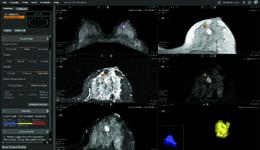
 February 04, 2010
February 04, 2010 
